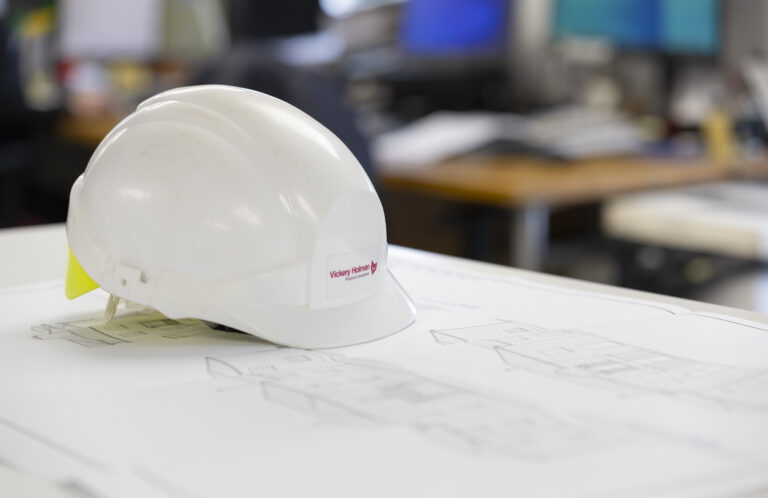Interim Schedule of Dilapidations
Managing the condition of a property throughout a lease term is important for landlords and tenants. An interim schedule of dilapidations helps you to comply with lease terms.
Management of Dilapidation – protecting property interests for landlords and tenants during the lease term
Managing the condition of a commercial property throughout a lease term is crucial for landlords, and tenants. Management of Dilapidations liabilities during the lease term helps ensure compliance with lease obligations, potentially preventing costly disputes at the end of a tenancy. At Vickery Holman, we can provide advice that can help mitigate risks, advise on strategies to manage liabilities, and safeguard property values.
Management of dilapidations during the lease term is often referred to as Interim Schedule of Dilapidations and is typically served if a landlord is concerned that proper maintenance in accordance with the lease term isn’t being carried out. The aim of the Interim Schedule is to remind the tenant of their obligations and clarify what’s expected – thereby helping to prevent significant deterioration to the building and protect the value of the property. It also protects the tenant from higher repair costs further down the line.
Who requires management of dilapidations during the lease term?
Early engagement in management of the dilapidations is essential in situations where:
- Landlords need to ensure their property is maintained according to lease agreements as failure of the tenant to comply with lease covenant covenants could result in a diminution in value. Typically, this will result in an interim schedule of dilapidations being produced.
- Tenants will want to track their obligations, budget for repairs, and prevent large dilapidations claims when vacating a property. A pro-active tenant will be undertaking pre-planned maintenance schedules to ascertain the works required or will be required to undertake the works identified in the landlords interim schedule of dilapidations.
- During Lease Negotiations, effective management of the lease covenants can help set realistic repair obligations and avoid disputes later.
The Benefits of managing dilapidations during the lease term
- Cost Savings – For the tenant, identifying maintenance issues early prevents costly repairs and legal disputes.
- Clear Lease Compliance – Ensures both landlords and tenants understand and meet their lease obligations.
- Risk Mitigation – Reduces the likelihood of disputes and unexpected financial liabilities at lease end.
- Planned Maintenance Strategies – Helps tenants budget effectively and landlords programme works and landlords plan works in which costs may be recoverable through the service charge.
- Independent, Expert Insight – Our experienced surveyors provide impartial assessments to support fair resolutions.
Why Choose Vickery Holman?
With decades of experience in property surveying, lease advisory, and dilapidations, Vickery Holman offers comprehensive services tailored to landlords and tenants. Our team ensures that lease obligations are met, risks are minimized, and property investments are protected.
For professional Dilapidations during and at the end of the lease term that helps you avoid disputes and control costs, contact Vickery Holman today.
Dilapidations FAQs
What are 'dilapidations'?
Dilapidations relates to a commercial property that has been let to a tenant and refers to the condition both during and after the period of the tenancy. Lease agreements stipulate the level of repair or maintenance that is required from a tenant during, or on completion, of a tenancy, and the parts of the property that are the responsibility of the tenant. Dilapidations relate to any breaches of the obligations of the tenant, including to repair, redecorate or reinstate elements of the property. Landlords and tenants can disagree on the levels of work required and it is worthwhile getting expert advice from a building surveyor before entering into a lease, as well as during or at the lease end, as costs can be significant for both landlord and tenant.
What dilapidations is a landlord responsible for?
A “full repairing and insuring” lease will require the tenant to be responsible for the whole of a commercial property, while an “internal repairing and insuring” lease will leave the responsibility for the external building fabric (walls, roofs, soft and hard landscaping etc.) with the landlord.
As the end of a tenancy approaches, it is recommended that landlords appoint a RICS accredited building surveyor to carry out a dilapidations survey, and to present the tenant with a Schedule of Dilapidations in advance of the lease ending. The intended use of the property may affect the extent of work that a tenant may be required to undertake. If a financial settlement is to be agreed, the money to be paid by the tenant for repair work might be limited to the loss in value to the property. If the landlord chooses to undertake dilapidations work at the end of the lease, they can reclaim the cost of doing so from the tenant.
Landlords usually want a property ready to go back on the market as fast as possible, so agreeing the work in advance is sensible. There is the possibility, in some leases, for a landlord to undertake work on behalf of the tenant prior to the lease end and recover this money via the lease. Careful assessment of the options available to a Landlord in advance of the lease end is advised.
What is a landlord responsible for in a commercial lease?
In most commercial leases the terms seek to limit the landlord’s day to day responsibilities as much as possible. The onus is placed on the tenant to repair and look after the property and comply with any restrictions that have been agreed. There are exceptions such as multi occupational buildings where the only practical option is for the landlord to take responsibility and recover the cost by a service charge. It all depends on the exact terms of the contract that specialist advice can clarify.
How do I make sure a break clause works properly?
Break clauses have become more common in recent years mainly to give tenant’s flexibility in uncertain and rapidly changing economic times. They can be a useful method to trigger a restructure of the lease. There are dangers as time limits and conditions must be strictly complied with for the break to be valid. There may be a financial penalty to pay. It is important to use specialist advice to know when and how to serve the break notice so your break option can benefit you.
What is a Schedule of Dilapidations?
A Schedule of Dilapidations is a detailed list of items that a landlord claims require repair, decoration or reinstatement in a commercial property. This schedule reflects the tenant’s obligations as outlined in the lease agreement, such as repairing, maintaining, or reinstating specific features of the property.
When is a Schedule of Dilapidations issued?
Typically, a Schedule of Dilapidations is issued towards the end of a lease term, often within the last year or after the tenant has vacated the property. It can also be issued during the lease term, in combination with a repair notice, if significant breaches are identified.
Who prepares the Schedule of Dilapidations?
A Schedule of Dilapidations is generally prepared by a building surveyor or another qualified professional, on behalf of the landlord. The surveyor inspects the property to assess its condition and determine if the tenant has met their obligations under the lease.
What are the types of Schedules of Dilapidations?
There are two main types of Schedules of Dilapidations:
- Interim Schedule: Issued during the lease term to address immediate breaches or maintenance issues.
- Terminal Schedule: Issued near the end of the lease term, to outline what needs to be repaired before the lease expires, or issued after the lease has ended, detailing the work required to restore the property to its original condition.
What should tenants do if they receive a Schedule of Dilapidations?
If you receive a Schedule of Dilapidations, consult with a legal advisor or a chartered surveyor experienced in dilapidations. They can help you understand the claims, negotiate with the landlord, and determine your rights and obligations under the lease.
Can a Schedule of Dilapidations be negotiated?
Yes, a Schedule of Dilapidations can often be negotiated. Disputes can arise over the scope of work required or the cost estimates. Negotiation might lead to a settlement or a compromise on the repairs or financial compensation.
How can tenants avoid dilapidation claims?
To minimise dilapidation claims, tenants should:
- Maintain the property as per the lease agreement.
- Conduct regular inspections to identify and address potential issues early.
- Keep thorough records of maintenance and repairs during the lease term.
- Consider obtaining a Schedule of Condition at lease start to establish the property’s initial condition.
What happens if a tenant ignores a Schedule of Dilapidations?
Ignoring a Schedule of Dilapidations can lead to legal action, additional costs, or further disputes. It is essential to address the claims and negotiate with the landlord or their representatives to avoid further complications.





